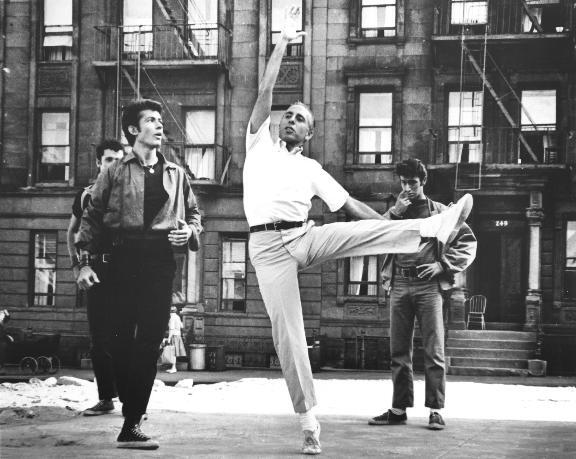
Attaining legendary status in the realm of American ballet is a rare achievement, but Jerome Robbins had already earned this distinction long before his passing in 1998 at his New York City residence. Robbins undeniably shaped the 'movements' of an entire generation of Broadway performers during its golden age. His portfolio was adorned with Tonys and Oscars, courtesy of smash hits like West Side Story, Fiddler on the Roof, Peter Pan, and Gypsy. Robbins also extended his influence into the realm of highbrow ballet. To delve deeper into the music behind his choreography, you may explore the accompanying bespoke playlist! Indeed, regardless of the stage he graced, Robbins infused his choreography with the raw emotions and gestures one would encounter on the 'postwar streets of New York City.' He had a knack for creating works that resonated with the common person, earning him the adoration of audiences far and wide.
But while Robbins's creative brilliance was undeniable, his personal life was marked by complexity. He faced the challenging dilemma of being a gay man in an era when homosexuality was often stigmatized and even persecuted. This led to a controversial chapter in his life when he cooperated with the 'House Un-American Activities Committee' during the McCarthy era, revealing names of fellow artists with ties to communism. This decision haunted him throughout his life and impacted his relationships within the arts community yet in spite of this, he continued to create groundbreaking work until the end of his career.
Feared though admired by many, it would not be an overstatement to suggest that Robbins devoted his whole life to his art and the individuals within its sphere. A perfectionist, Robbins was notoriously hard on dancers, actors, and even his close collaborators and friends, including the renowned composer Leonard Bernstein. In her book about Robbins titled Jerome Robbins, His Life, His Theater, His Dance, dancer and fellow choreographer Deborah Jowitt highlights Robbins' profound artistic impact:
“...art that made an enormous contribution to theater and dance almost worldwide.”
This is far from an exaggeration. One of his best known contributions to ballet was his great ability to create synergy between singing, dancing and acting, paving the way for all the Broadway chef d'oeuvres that came after him in the golden age of Broadway.
Indeed, with such renowned musicals like West Side Story, Peter Pan, The King and I, and Fiddler on the Roof, Jerome Robbins introduced a revolutionary naturalism to dance and movement. This innovation was so profound that even those who faced his exacting standards still regarded Robbins as an undisputed master of his craft. Moreover, Robbins was a champion of comedy, as exemplified in his routines, such as When ballet goes wrong (set to Chopin’s Waltz in E minor), where "mistakes" were deliberately integrated into the performance for comedic purposes. Fearlessly, he challenged established norms and expanded the frontiers of traditional dance. His works often bore the distinct hallmark of irreverence, as he seamlessly injected humour and satire into his choreography, crafting a distinctive mix of entertainment and artistic expression. With a remarkable knack for blending his choreography with wit and irony, Jerome Robbins stood out as a multifaceted talent, brimming with a wealth of brilliant ideas that materialized into highly acclaimed ballets, theatrical productions, and films.
Jerome Robbins became a member of the newly established New York City Ballet in 1949 and swiftly assumed the role of associate artistic director, working alongside George Balanchine. He remained an integral part of the company, contributing choreography and collaborating until 1989, at which point he stepped down from his position as co-ballet master in chief. During his lifetime, Jerome Robbins choreographed 54 ballets, set to music ranging from Bach to Bernstein, and lent his choreographic talents or directorial expertise to over 20 Broadway productions. His exceptional contributions earned him numerous accolades, and he enjoyed a prosperous career that spanned both domestic and international stages for many years. Robbins' legacy stands as a testament to his artistic innovation, his dedication to storytelling through dance, and his enduring impact on the performing arts. His work continues to be celebrated, studied, and performed worldwide, ensuring that his profound influence on dance and theater will be cherished for generations to come.
Discover the music that accompanied Jerome Robbins' legendary choreography with our exclusive playlist!